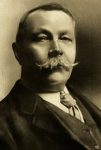Arthur Conan Doyle and Spiritualism
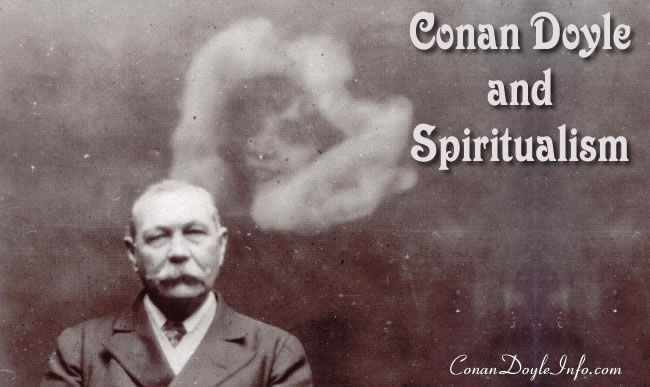
Last Updated on October 7, 2024 – Originally published June 10, 2015
When you think of Sir Arthur Conan Doyle, the creator of the ever-logical Sherlock Holmes, Spiritualism might not be the first thing that comes to mind. Yet, Doyle was a fervent believer in the possibility of communicating with the spirits of the departed.
And then there were the fairies…
This article delves into Conan Doyle’s intriguing journey into Spiritualism, his involvement in the famous Cottingley Fairies incident, and his complex relationship with the legendary magician, Harry Houdini.
Spiritualism
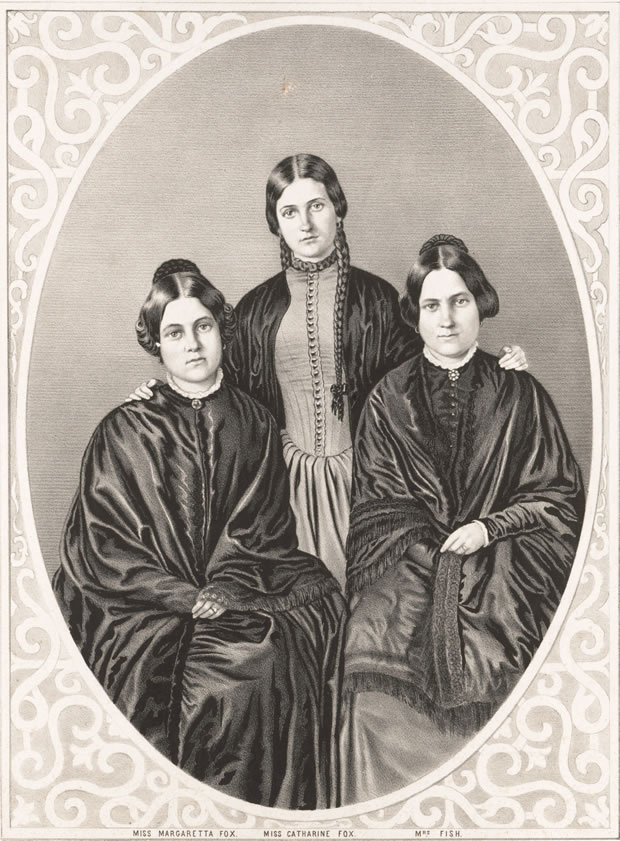
The Fox sisters. From left to right: Margaret, Kate and Leah
The Fox sisters are credited with the birth of Spiritualism.
In 1848 Maggie and Katie Fox, discovered that they were able to communicate with a spirit that seemed to inhabit their home in Hydesville, New York. The spirit claimed to be a murdered man who was buried in the cellar.
Spiritualism focused on communication with spirits. The movement stressed that there was indeed life after death and that communication with those who had “passed over” was entirely possible.
By 1855 two million people were followers of the movement.
As time went by disorganization within the movement and fraudulent practices lead to the movement’s decline. By 1900 Spiritualism had lost its popularity.
However, after the First World War, the movement once again became popular as people struggled to deal with the loss of loved ones.
Conan Doyle’s Early Religious Life
The Doyle family was strongly Catholic. Conan Doyle was raised in that tradition but he came to question those beliefs. He declared himself an agnostic.
So strong were Conan Doyle’s beliefs that he refused the help of his father’s family in establishing his medical practice. He realized that the family would have recommended him to their church connections. He felt that it would have been hypocritical to draw on that sort of support.
As early as 1881 Conan Doyle showed an interest in Spiritualism. During that year he attended a lecture on spiritualism.
In 1887, The Light, a spiritualistic magazine, published an article by Conan Doyle describing a séance that he’d attended.
In February of 1889 he attended a lecture on mesmerism given by Professor Milo de Meyer. In fact, as part of the lecture de Meyer tried to mesmerize or hypnotize Conan Doyle, but failed.
Conan Doyle a Ghostbuster?
In 1893 Conan Doyle joined the British Society for Psychical Research.
Other members were future Prime Minister Arthur Balfour, philosopher William James, naturalist Alfred Russel Wallace, scientists Williams Crookes and Oliver Lodge.
In 1894 Colonel Elmore asked the organization to investigate mysterious sounds emanating from his home in Dorset. At night Elmore, his wife and adult daughter could hear chains being dragged across a wooden floor and moaning that sounded like a soul in torment. The family dog refused to enter certain parts of the home and most of Elmore’s staff had left.
Conan Doyle, Dr. Sydney Scott and Frank Podmore were sent to investigate the possible haunting. They spent several evenings in the home however their results were inconclusive.
One night the investigators were disturbed by a “fearsome uproar” but no damage or cause for the noise could be discovered. Conan Doyle left the Dorset home unsure if it was genuinely haunted or if the haunting had been a hoax.
Later, the body of a child, approximately ten years old, was discovered buried in the garden.
Conan Doyle became convinced that he really had witnessed psychic phenomena that was caused by the spirit of the dead child.
The Public Fight – Arthur Conan Doyle and Spiritualism
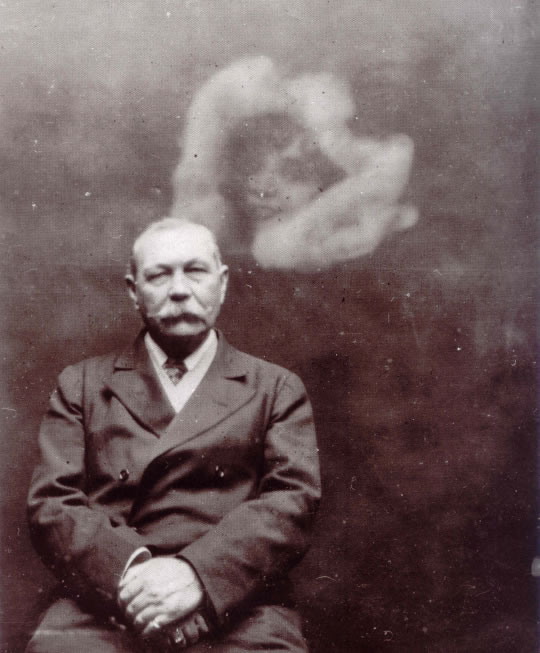
Photo from 1922 by spirit photographer Ada Deane purports to show Conan Doyle with a spirit.
During October of 1917 Conan Doyle gave his first public lecture on Spiritualism. He wanted to present the facts, as he knew them, for the benefit of mankind.
Even though Conan Doyle knew his reputation and career would suffer he became an outspoken proponent for the movement.
He wrote books, articles and made countless public appearances to promote his beliefs. His easy-going manner and absolute faith in the movement made him an effective speaker. He was so sincere that even opponents of Spiritualism considered him to be well-intentioned.
Harry Price made a reputation for himself by exposing false mediums. He had this to say about Conan Doyle, “Setting aside for the moment his extraordinary and most lovable personal qualities, the chief qualification that he possessed for the role of the investigator was his crusading zeal. Among all the notable persons attracted to Spiritualism, he was perhaps the most uncritical. His extreme credulity, indeed, was the despair of his colleagues, all of whom, however, held him in the highest respect for his complete honesty. Poor, dear, lovable, credulous Doyle! He was a giant in stature with the heart of a child.”
Conan Doyle and the Cottingley Fairies
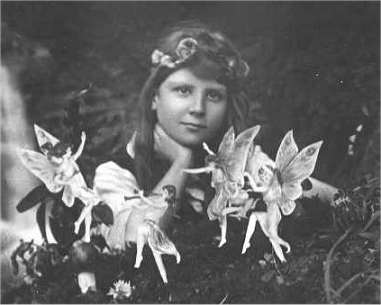
Conan Doyle’s already battered reputation hit a new low in late 1920. The December issue of The Strand magazine featured an article written by Conan Doyle about some extraordinary photos.
Two young ladies in the Yorkshire village of Cottingley took these photographs of things they’d seen surrounding their country home.
The photos were of fairies.
Conan Doyle learned of the photos earlier in the year and he began to investigate the matter.
Negatives of the photographs were sent to two places for testing.
One group, the London representatives of Kodak, stated that no one had tampered with the negatives. However, they also said that they could produce similar photos and therefore they could not state the photos were genuine pictures of fairies.
Conan Doyle received a different response from the second expert. Harold Snelling examined the negatives and declared the photos to be genuine.
Snelling’s endorsement along with Conan Doyle’s chivalrous view that two, young ladies would not lie about such a matter lead him to believe that the photos were authentic photos of fairies.
Conan Doyle and Harry Houdini
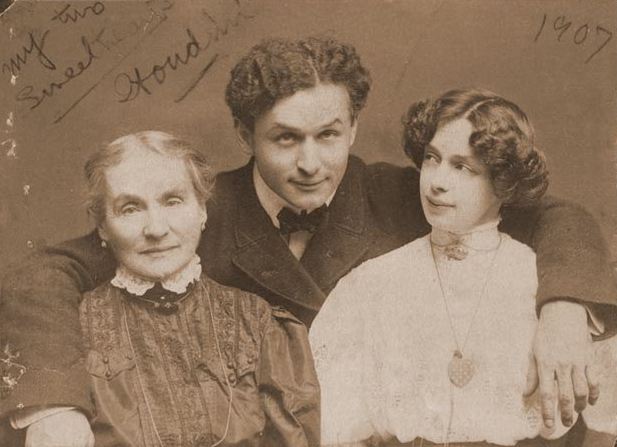
“My Two Sweethearts”—Houdini with his mother and wife
Harry Houdini is considered by some to be the greatest magician of all time. He specialized in escapes. He could inexplicably extract himself from coffins, mailbags, and safes.
In one famous incident, Houdini even broke free of handcuffs in Scotland Yard.
Houdini became interested in Spiritualism after the death of his beloved mother. He had hopes of contacting her.
However, after consulting mediums and attending séances he became convinced that mediums were charlatans.
Thereafter he made it a personal mission to expose false mediums.
Conan Doyle first met Houdini in 1920. Oddly enough the two men became friends.
Conan Doyle wanted to make Houdini a believer in the movement. He even suspected that Houdini possessed some psychic gifts.
Houdini must have been flattered by the attention of the famous creator of Sherlock Holmes. Also, Houdini really did want to believe in the movement. If he could find a genuine medium then he could perhaps contact his mother.
In 1922 Conan Doyle and his family were in America for a lecture tour on Spiritualism. They arranged to meet Houdini and his wife, Bess, in Atlantic City.
While the couples were visiting Lady Conan Doyle suggested that they hold a séance. Jean Conan Doyle was an inspired or automatic writer and she felt that she could help Houdini attain what he’d long sought, contact with his mother.
The session went well and Lady Conan Doyle produced fifteen pages of writings supposedly from Houdini’s mother.
While Houdini didn’t doubt that the Conan Doyles sincerely wanted to help him, he did doubt that the message was from his mother.
He didn’t say anything at the time, but the communication was in English, a language that his mother didn’t speak. Also the writings made no mention of the fact that the séance happened on his mother’s birthday.
Months later Houdini shared his doubts.
Conan Doyle countered that contact between the two worlds produced a natural translating effect. Thusly it was normal that the communication would be in the language of the medium and not that of the spirit.
He also stated that things such as birthdays didn’t matter to those in the spirit realm.
Although they tried to put this incident behind them their friendship never recovered from the rift.
Summary
Conan Doyle’s support of Spiritualism did damage his reputation as he knew it would. He was never one to back away from a fight and the fight for Spiritualism was one he fought until the end.
A few days before his death in 1930 Conan Doyle wrote, “The reader will judge that I have had many adventures. The greatest and most glorious of all awaits me now.”

